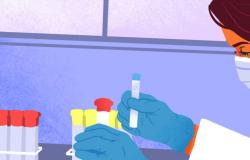Humans are not the largest consumers of antibiotics on the planet. These medications have been used massively for more than 60 years to treat common pathologies in livestock. So much so that today, it is estimated that 73% of global antibiotic use is dedicated to treating food-producing animals (cows, sheep, pigs, etc.).
These compounds must be administered under veterinary prescription, using authorized products, respecting the doses and routes of administration, and following the recommended waiting times. Although most of the compounds are eliminated through urine and feces, residues may still remain in derived food products, such as milk or meat. Therefore, it is important to respect the waiting times established according to the food.
Cooking food is generally considered one of the ways to reduce the concentration of antibiotic residues, although it is not always sufficient or effective. Be that as it may, foods that are consumed raw, or those made from raw ingredients without thermal processing (such as sterilization) require special attention. Within these, raw milk cheeses are being analyzed.
Tasty and aromatic
Dairy products have been foods of great nutritional, social and economic importance for decades. Raw milk cheeses are of special interest, due to their interesting sensory properties -flavor, aroma…-, compared to cheeses made from pasteurized milk. In Spain, for example, there is a great cheesemaking tradition and we find numerous raw milk cheeses with Protected Designation of Origin, such as Idiazabal or Manchego.
What problem do antibiotic residues pose?
The presence of antibiotic residues in food poses a serious threat to public health. Firstly, residues can give rise to various toxicological effects: allergies, intestinal microbiota dysfunction, immunopathological effects, carcinogenicity, mutagenicity, nephropathy, hepatotoxicity, reproductive disorders, bone marrow toxicity or anaphylactic shock. In addition, it contributes to the development of resistant bacteria.
Regulatory authorities worldwide have therefore set maximum residue limits based on acceptable daily intake, which represents the amount of a substance that can be ingested daily over a lifetime without appreciable health risks. Within dairy products, limits are only set for milk. This is particularly relevant for products such as cheese, as some antibiotics may be concentrated in them.
Aside from its effects on human health, the presence of antibiotic residues can have adverse effects in the production of dairy products such as cheese. These compounds can cause problems with starter culture growth, acidification, milk curdling, or ripening. Therefore, the presence of waste affects the quality of the final product and causes economic losses for the dairy sector. Another reason to reduce them to a minimum.
How many antibiotics are there in Idiazabal cheese?
However, the reality is that scientific information on the presence of residues in real cheese production is scarce. Hence, our latest studies focused on searching for antibiotic residues using the Idiazabal PDO as a model. In a previously published study, residues of chlortetracycline and sulfamethazine had been detected in sheep feces. However, only one antibiotic (tylosin) was identified in raw milk, and at a concentration that was below legal limits.
During cheese making, however, this compound disappeared. And it was not detected in the matured cheeses. This suggests that the manufacturing process eliminates the compounds most commonly used in the treatment of the herd, being of special interest for public health.
Do raw milk cheeses contribute to spreading resistance?
Today, antibiotic resistance is so widespread that effective treatment of certain deadly infections is already compromised, causing 700,000 deaths worldwide annually. What’s more, the WHO considers it one of the ten main threats to global public health, falling within the priorities of the Sustainable Development Goals.
In this context, the food production chain and foods are classified as a possible vehicle for the dissemination of resistance, especially fermented products, such as raw milk cheeses. However, information about raw milk cheeses and, especially, what happens to possible resistant bacteria during cheese making is scarce.
In a recent study, also within the Idiazabal PDO, we have analyzed the antibiotic resistance of lactic acid bacteria, the most abundant in these products. A notable presence of resistant bacteria (such as Enterococcus, Bacillus either Lactococcus), and resistance genes (such as, str, str B and aad A-01). However, in matured cheeses it decreased significantly, with a greater abundance of susceptible bacteria (such as Lacticaseibacillus and Lactobacillus).
This is the first time that the interesting modulating effect of the cheese-making process has been described, which contributes to reducing the risk in these products. Future efforts should focus on determining the key processing parameters to try to reduce these resistances as much as possible.






